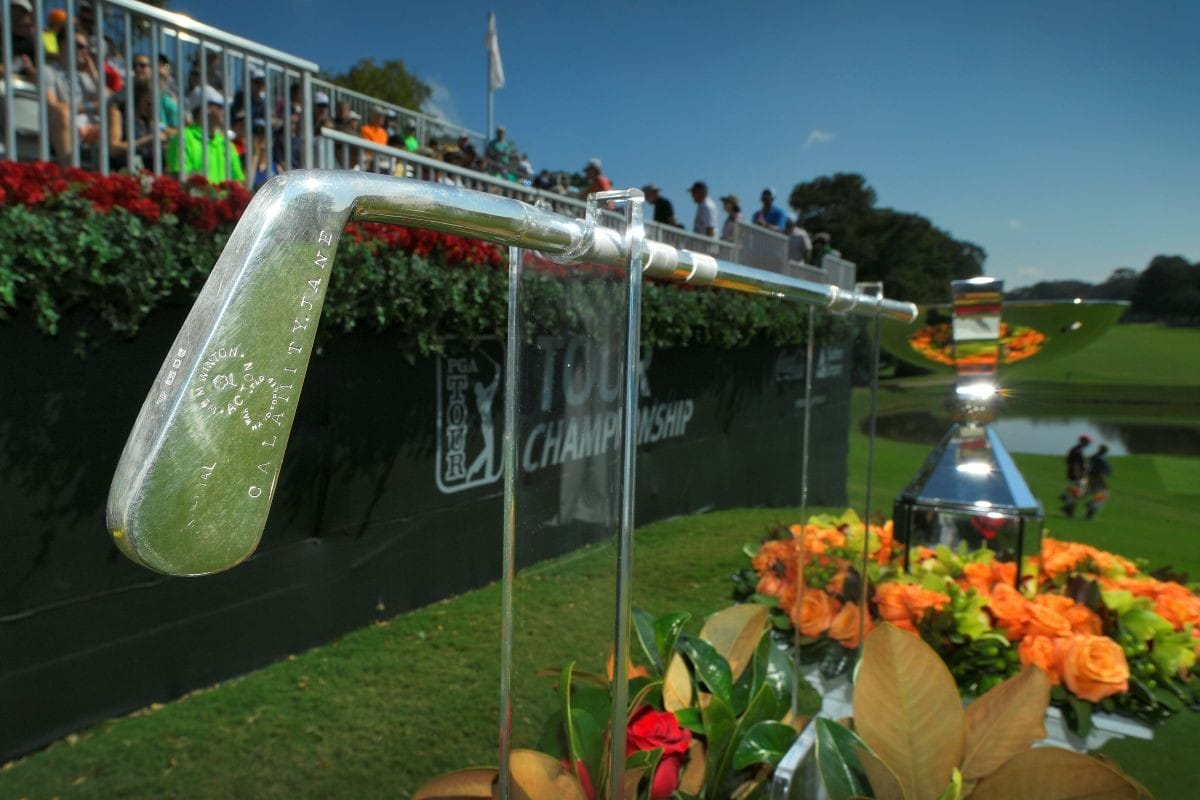Augusta National founder Bobby Jones is also the man behind The Masters. Jones’ legendary putter, Calamity Jane, remains one of the most iconic clubs in golf history. Ivan Morris explores its mysterious origins, its impact on Jones’ remarkable career, and the confusion surrounding the numerous versions of the famous putter.
If his amateur victories are included, Bobby Jones (often regarded as the greatest golfer who ever lived) won 13 of what could be termed major championships between 1923 and 1930, when he retired prematurely at the age of 28. In Jones’s lifetime, and before it, championship amateur golf was perceived as at least the equal of the professional game.
And it was he who, in 1934, invited the best golfers in the world to come and challenge him on his own golf course – even though Jones had officially been retired for four years – and in doing so, created The Masters which has since become the most eagerly anticipated event on the global golfing calendar.
Jones’ putter, known as Calamity Jane, has to be the most famous club in the entire history of golf, but there is still a tinge of mystery concerning its origins. The greatest season of championship golf ever played was confirmed by winning what was termed the Impregnable Quadrilateral in 1930 while using a ‘Calamity Jane’: the British and American Open Championships and the British and American Amateur Championships. The Opens were played over 72 holes of stroke play, and the Amateurs via match play—a format in which ‘anybody could beat anybody’ in a single round of golf. Prior to acquiring Calamity Jane in 1923, Jones had contended often over a seven-year period without ever managing a victory.
In 1960, Joe Dey, the then CEO of the USGA, set out to clarify some confusion over how many of his thirteen majors had been won while using Bob’s beloved Calamity Jane (by then lodged for posterity in the USGA’s Museum in Far Hills, New Jersey) by writing a personal note to the now long-retired Jones, living in Atlanta.
Dear Bob,
In our identification of “Calamity Jane”, we say that you used it in winning 12 of your 13 National Championship wins. I believe you have subsequently told me that you used it in 10. Is that right?
Bob wrote back to confirm the number was ten, but then the confusion begins. There was more than one Calamity Jane. There was a Calamity Jane I that was at least twenty years old when Jones acquired it in 1923, and a Jane II that was built in 1926 by J. Victor East, a club designer and fitter who worked with Spalding, from whom Jones purchased his clubs, along with another half-dozen copies as exact replacements, down to the same markings on the back of the clubhead. So that means there were at least eight – as identical as one can get – Calamity Jane putters in existence at one time. What happened to them all? To this day, nobody knows.

There is no dispute that Jimmy Maiden, the brother of Stewart, Bobby’s influential, lifelong coach and head pro at East Lake CC in Atlanta, gave the first Calamity Jane to Bob after a particularly dispiriting putting performance during a practice game prior to the 1923 US Open. It was a rusty and battered implement with a spliced and repaired hickory shaft bound in three places by black whipping cord.
No doubt it had had several owners before Jones. One of them may have smashed it in a fit of temper and thrown it over the wall dividing the Nassau golf course from a graveyard, because Joe Merkle, an assistant pro, found it there in three pieces while taking a shortcut. He picked it up and repaired it, hoping to sell it at some stage. When his boss, Jim Maiden, saw it, he liked the ‘feel of it’ and began putting with it.
After playing a practice game together on the Monday prior to the US Open taking place at Inwood in 1923, Bob complained to Jim about his inconsistent putting. The pro took him to the 18th green, threw down five balls, and handed his Calamity Jane to Bob. From various angles and distances, Bob holed 24 out of 25 putts.
Bob takes up the story: “Jim told me to play the ball back a little in my stance (because there was extra loft in the face) and to hit down and through the ball by keeping the back of my left hand going down and towards the hole. I soon gained confidence in both the putting style and the putter. I would have to say that day turned out to be most profitable (in my career).”
They went back to the pro shop to talk to Merkle.
“How much does it cost, if it’s for sale?” Jones (who was still a college student at the time) asked. “If you like it, it’s yours as a present,” Maiden replied.
On such whims are eternal greatness made.
The reason why Calamity Jane II was reproduced was that the constant buffing to remove rust caused the face to become ‘too light in weight and irregular’. Jones himself had six Calamity Jane IIs. It is not known if he switched around using them to underscore that ‘it was the Indian, not the arrow, that mattered most’.























Leave a comment